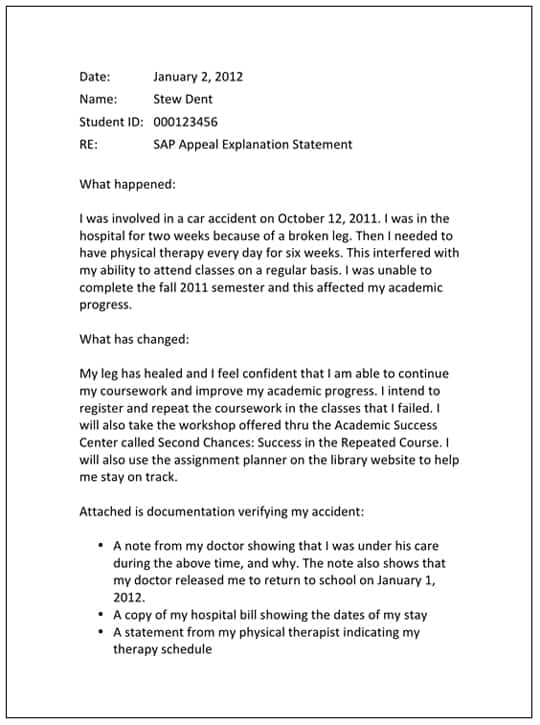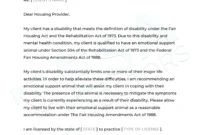Facing a financial aid suspension can feel like hitting a major roadblock on your academic journey. It’s a moment filled with anxiety, wondering how you’ll continue funding your education, which is often a significant investment of time and money. Many students find themselves in this challenging situation due to a variety of circumstances, whether academic difficulties, personal hardships, or unexpected events. The good news is that a suspension doesn’t necessarily mean the end of your financial support.
Most educational institutions offer an appeal process, giving students a chance to explain their situation and demonstrate their commitment to getting back on track. This is where a well-crafted appeal letter becomes your most powerful tool. It’s your opportunity to clearly communicate what happened, what you’ve learned, and what steps you’re taking to ensure future success. Understanding how to structure and write such a letter is crucial, and having a reliable financial aid suspension appeal letter template can provide a much-needed starting point and guide you through the process effectively.
Crafting Your Appeal: Key Components of a Strong Letter
When you’re preparing an appeal for financial aid reinstatement, remember that the goal is to persuade the financial aid office that your past issues have been addressed and that you are now ready and capable of meeting academic standards. This isn’t just about making excuses; it’s about taking responsibility, explaining your situation clearly, and outlining a concrete plan for improvement. Your letter needs to be professional, sincere, and focused on solutions.
Start by clearly stating your purpose: you are appealing a financial aid suspension. Then, delve into the specific reasons that led to your academic difficulties or failure to meet Satisfactory Academic Progress (SAP) requirements. Be honest and specific, providing dates and details where possible. If personal issues like illness, family emergencies, or unexpected life events contributed, explain them compassionately but concisely. Avoid overly emotional language, but don’t shy away from conveying the genuine impact these events had on your academic performance.
Following your explanation, the most critical part of your letter is your action plan. This section demonstrates your commitment to academic recovery and shows the financial aid committee that you have thought critically about how to prevent future issues. Outline specific, measurable steps you will take. This could include enrolling in academic support programs, utilizing tutoring services, seeking counseling, reducing work hours, or making changes to your course load. The more detailed and actionable your plan, the more credible your appeal will be.

Finally, ensure your letter is professionally formatted, free of grammatical errors, and includes all necessary identifying information. Before you even begin writing, gather any supporting documentation that corroborates your story. This evidence is crucial as it adds significant weight to your claims and helps the committee understand the severity and legitimacy of your circumstances. Remember, a well-organized and well-supported appeal letter significantly increases your chances of a successful reinstatement.
Essential Sections to Include
- Your Full Name and Student ID Number: Clearly identify yourself at the top of the letter.
- Date: The date you are writing and submitting the appeal.
- Financial Aid Office Contact Information: Address the letter to the correct office or individual.
- Professional Salutation: “Dear Financial Aid Committee” or “To the Financial Aid Appeals Committee.”
- Clear Statement of Purpose: Immediately state that you are appealing your financial aid suspension.
- Detailed Explanation of Circumstances: Describe the extenuating circumstances that led to your academic struggles, including specific dates and events.
- Comprehensive Action Plan for Improvement: Outline the specific steps you will take to improve your academic standing and avoid future issues.
- Supporting Documentation: List and reference any attached documents (doctor’s notes, death certificates, counseling reports, etc.).
- Professional Closing: A courteous closing, such as “Sincerely” or “Respectfully.”
- Your Signature and Typed Name: Sign the letter above your typed name.
Tips for a Persuasive and Effective Appeal
Beyond the basic structure, making your appeal truly persuasive requires careful consideration of its tone and content. The financial aid committee reviews many appeals, so yours needs to stand out as a genuine and well-thought-out plea. Start by understanding that they are looking for evidence of change and a commitment to academic success, not just a reason for past failures. Take full responsibility for your academic performance, even if external factors were at play. Acknowledge where you fell short and articulate what you have learned from the experience.
When explaining your extenuating circumstances, be specific but avoid excessive detail that might sound like complaining. For instance, if you faced a medical emergency, briefly explain its impact on your studies and how you are now managing your health. If family issues arose, describe the general situation and how it has been resolved or how you are now coping to minimize its impact on your academics. The committee needs to see that the root cause of your suspension is either resolved or that you have developed effective strategies to mitigate its effects.
Your action plan is arguably the most critical part of your appeal. This is where you demonstrate foresight and a proactive approach to your education. Don’t just say you’ll “study harder.” Instead, specify how: “I have enrolled in the university’s free tutoring service for Math 101,” or “I will meet with my academic advisor monthly to monitor my progress,” or “I have adjusted my work schedule to ensure at least 20 hours per week are dedicated solely to my studies.” The more concrete and verifiable your plan, the more convincing it will be.
Finally, remember the power of supporting documentation. A doctor’s note verifying an illness, an obituary for a family member, or a letter from a counselor confirming mental health support can significantly strengthen your case. These documents provide objective evidence for your subjective explanation. Without them, your appeal might lack the necessary credibility. Always submit copies, never originals, and ensure they are clearly labeled and referenced within your letter, making it easy for the committee to connect your story with the proof. A comprehensive financial aid suspension appeal letter template can help ensure you don’t miss these vital components.
Navigating a financial aid suspension can be daunting, but it is a hurdle many students successfully overcome. By approaching your appeal with honesty, responsibility, and a clear plan for the future, you demonstrate your readiness to recommit to your educational goals. Your determination and the effort you put into articulating your situation will speak volumes about your resolve to succeed.
Remember, your education is a valuable investment in your future, and taking the necessary steps to reinstate your financial aid is a crucial part of protecting that investment. You have the ability to articulate your story and show the committee that you are prepared to thrive academically. Take action, be thorough, and believe in your ability to get back on track.



